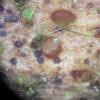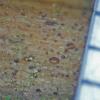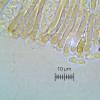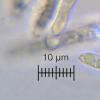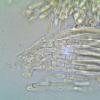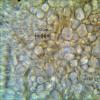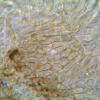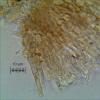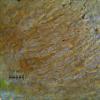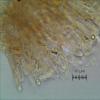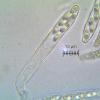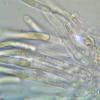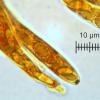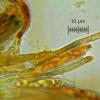
02-12-2025 18:59
This pair of ascos 2.5cm across were on recently b

02-12-2025 19:25
Buckwheat PeteHello, can anyone identify this hairy fungus growi

30-11-2025 12:53
 Edvin Johannesen
Edvin Johannesen
White short-stipitate apothecia found on thin twig

30-11-2025 10:47
 William Slosse
William Slosse
I recently found a collection of small Peziza sp.

27-11-2025 12:01
Thomas Læssøehttps://svampe.databasen.org/observations/10496727

27-11-2025 11:46
Thomas Læssøehttps://svampe.databasen.org/observations/10493918

17-09-2025 10:50
Heather MerryleesHi there!I am hoping for any advice on the identif

29-11-2025 08:40
 Andreas Millinger
Andreas Millinger
Hello,on a splintered part of a branch on the grou

28-11-2025 16:45
Nogueira HéctorNovember 23, 2025 Requejo de Sanabria (León) SPAI
 Hi again,
Hi again,on that rubus-twig I found a second fungus of the Naevioideae. They are very difficult, I think.
This one opens with a lid like in Trochila, apothecia up to 0,2 mm, spores ellipsoid, hyalin with two large guttules and some smaller ones, (9-10) 9,63x3,94 (3,5-4) µm. Asci cylindric to clavate, 50-69 x 7-8 µm,porus-reaction Ikl positive, dull-violett to blue, biseriat with croziers. Paraphyses with strongly refractive content, cylindrical, 4 µm wide. Marginally hairs? up to 45 x 4 µm, 5 cells, 4 are light brown, the cell at the end is clavate, hyalin.
Thank you for your help.
Regards Maren
?

I overlooked this, sorry. It is not Naevioideae but a relative of Trochila as you compared. Hysterostegiella would be an option, but the paraphyses are there always lanceolate. H. dumeti would be on Rubus but has much smaller spores with a low oil content (as also all the other Hysterostegiella species treated by Hein 1983).
I know a similar fungus, in which I never saw a lid like here, though it is erumpent and pushes the epidermis aside, see HB 3802. I used to identify this at first as Duebenia cf. blyttiana, but only until I studied the type of it. Now I have it as "Duebenia-like" in Hysterostegiella, though it could better fit in Trochila. In my HB 5801 the paraphyses are actually slightly lanceolate. Contrary to yours the asci are alway inamyloid there.
The excipulum is covered by crystals. Is this also in yours? I think one of your middle pics show crystals.
Zotto
